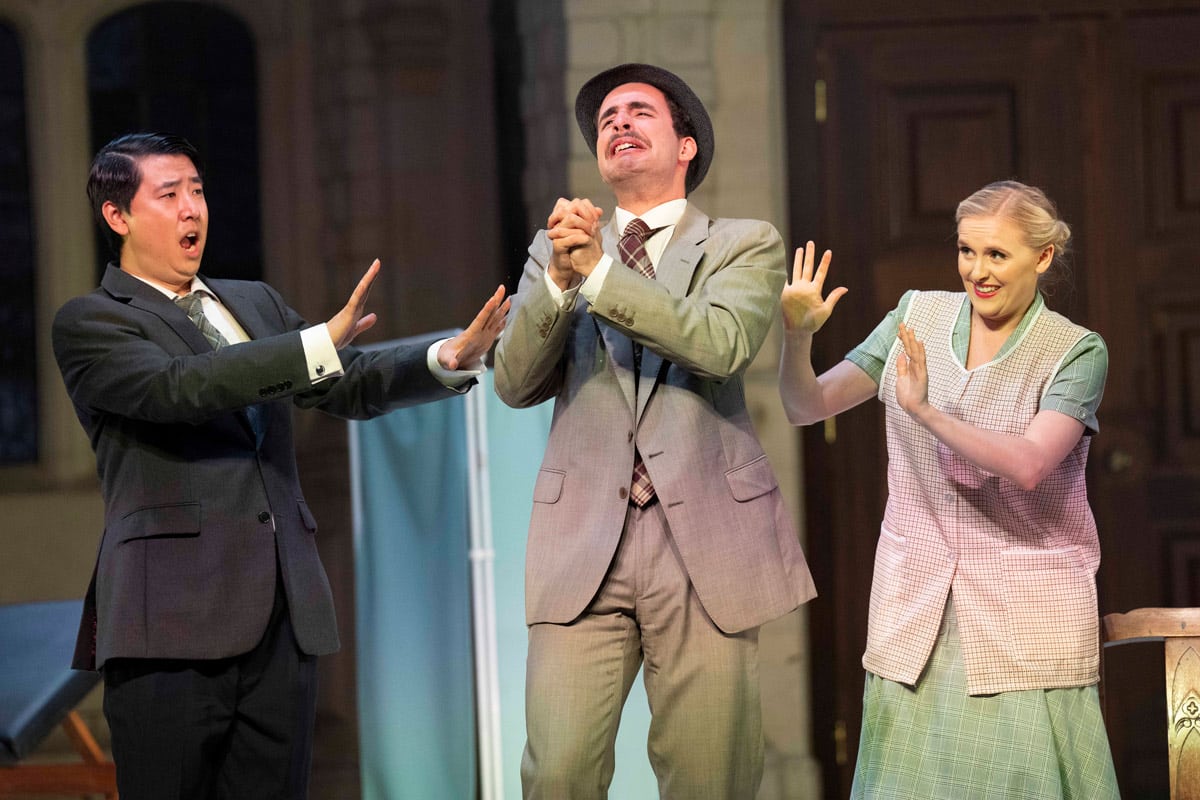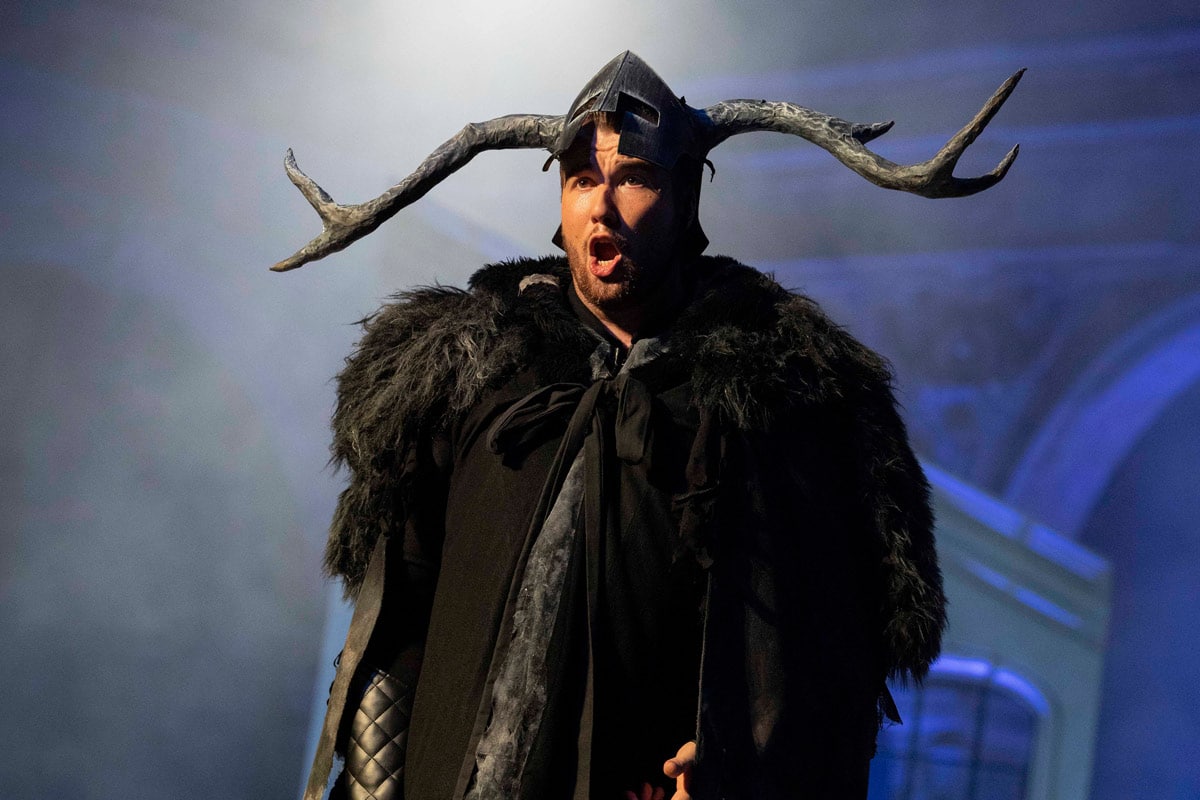Tim Hochstrasser reviews Vaughan Williams’ Sir John In Love performed by British Youth Opera in a guest residency at Opera Holland Park.

Sir John in Love
British Youth Opera
Opera Holland Park
25 August 2022
4 Stars
British Youth Opera Website
The curtain comes down on Opera Holland Park this year with a brief guest residency from British Youth Opera, who do very important but underappreciated work in training the next generations of opera professionals in this country – not just the singers but the orchestral players and technical staff as well. This was a double pleasure of an evening because it also offered a rare hearing for Vaughan Williams’ ‘Sir John in Love’, which had a notable performance at ENO in 2006, but rarely since.

It was a bold choice by the composer to explore the same territory as Verdi after only thirty years; but in fact, this is a rather different take on the Falstaff story from the carefully layered coverage assembled by Boito from the Henry IV plays as much as from ‘The Merry Wives of Windsor’. Vaughan Williams sticks much more closely to the latter and then adds in text from other contemporary writers as well. As a result, the text ends up as a bit of a well-meaning Tudorbethan mishmash with some moments of unintended humour. He is more successful in following his predilection for folksong by including many modal melodies of the era with their original words. The broader orchestral score is thickly orchestrated with all the familiar elements of this composer’s mature sound world – lush pastoral, including a lovely interlude based on ‘Greensleeves’, vigorous, heavily-scored choral writing, sinister side episodes, and exquisite spots of reposeful melancholy and whimsy.

Given that the story is so familiar and that the humour of ‘The Merry Wives’ is broad rather than subtly comedic, a production that wishes to impress needs both pace, coherent direction of the many crowd scenes, and dynamic creative acting by the principals. While never less than well-made, the dramatic impetus of the score can otherwise flag. Director Harry Fehr and conductor Marit Strindlund drive forward the action impressively and make full use of the wide-open spaces at Opera Holland Park. A flexible minimalist set provides sufficient suggestions of interior settings, and costumes and lighting schemes make a pleasing combination especially successful in evoking Windsor Forest for the denouement. But, inevitably, with a young cast, the detailed character acting needed for the various roles really to come to life was only intermittently present.

However, much of the singing was very impressive indeed. There are two casts and the comments that follow apply to August 25 only. Conrad Chatterton as the fat knight demonstrated ample bluster and bravado, but perhaps needed to find a bit more low cunning. Philip Costovski, Toki Hamano, and Armand Rabot, as his bawdy associates, all enjoyed good solo moments, and the central couples of Fords and Pages were all vocally well matched. Nancy Holt was a particularly spirited Mistress Quickly and there was excellent work from Justin Jacobs as Dr Caius, Joshua Saunders as Justice Shallow, James Micklethwaite as his nephew, Slender, and Emyr Lloyd Jones, as the parson – all roles that are much more fully developed here than they are in Verdi’s take on things. Clara Barbier Serrano and Sam Harris coped confidently with the radiantly demanding music for the young lovers, Anne and Fenton.

The orchestral playing was also impressive. A bit more rehearsal time would doubtless have tweaked the sound balance between pit and stage and avoided a few issues of synchronicity; but otherwise this was an assured delivery of a complex score with a confident rich sound in all departments especially in the several interludes which cover essential scene changes. Conductor Marit Strindlund handled the big climaxes and some tricky transitions with real skill.
This was an excellent choice of opera for providing a training exercise – there are many moderately sized roles to provide useful experience, and a goodly proportion of the characters are young in years too. There is a lot of stage business to get through to hone the talents of stage managers, and the required orchestral palette is varied, with plenty of points of symphonic development where the orchestra is essentially a character in the action, again very useful for the players to grasp.
For the audience it was a rare chance to hear an under-appreciated work that was an important part of the composer’s overall manifesto that English music should draw on English materials – both story and folksong tradition – rather than following Continental models. All in all, a continually engrossing and satisfying evening.
